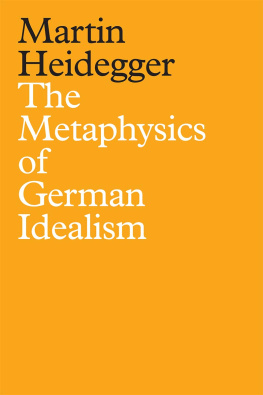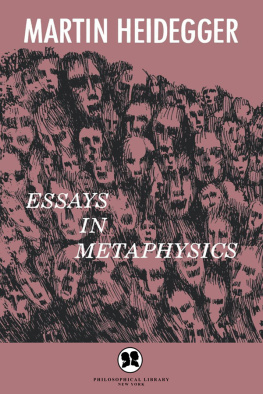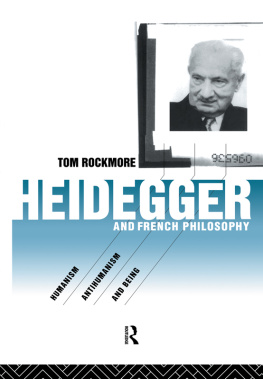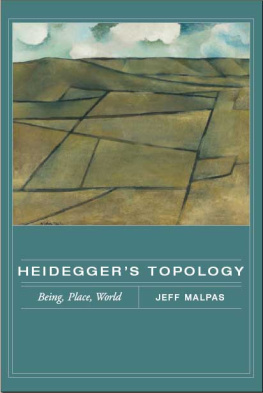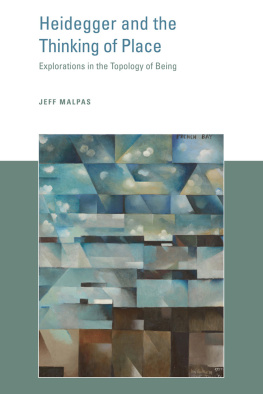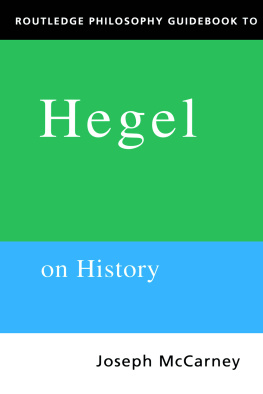Martin Heidegger - Introduction to Metaphysics
Here you can read online Martin Heidegger - Introduction to Metaphysics full text of the book (entire story) in english for free. Download pdf and epub, get meaning, cover and reviews about this ebook. year: 0, genre: Religion. Description of the work, (preface) as well as reviews are available. Best literature library LitArk.com created for fans of good reading and offers a wide selection of genres:
Romance novel
Science fiction
Adventure
Detective
Science
History
Home and family
Prose
Art
Politics
Computer
Non-fiction
Religion
Business
Children
Humor
Choose a favorite category and find really read worthwhile books. Enjoy immersion in the world of imagination, feel the emotions of the characters or learn something new for yourself, make an fascinating discovery.

- Book:Introduction to Metaphysics
- Author:
- Genre:
- Year:0
- Rating:3 / 5
- Favourites:Add to favourites
- Your mark:
- 60
- 1
- 2
- 3
- 4
- 5
Introduction to Metaphysics: summary, description and annotation
We offer to read an annotation, description, summary or preface (depends on what the author of the book "Introduction to Metaphysics" wrote himself). If you haven't found the necessary information about the book — write in the comments, we will try to find it.
Introduction to Metaphysics — read online for free the complete book (whole text) full work
Below is the text of the book, divided by pages. System saving the place of the last page read, allows you to conveniently read the book "Introduction to Metaphysics" online for free, without having to search again every time where you left off. Put a bookmark, and you can go to the page where you finished reading at any time.
Font size:
Interval:
Bookmark:
Introduction to Metaphysics
MARTIN HEIDEGGER
Introduction to Metaphysics
Second Edition
Revised and expanded translation by Gregory Fried and Richard Polt
Yale
UNIVERSITY PRESS
New Haven & London
Second edition copyright 2014 by Yale University, new material: revised and expanded English translation, translators introduction, prefatory material, and notes. First edition copyright 2000 by Yale University.
First edition 2000. Second edition 2014.
Originally published as Einfhrung in die Metaphysik by Max Niemeyer Verlag, Tbingen.
All rights reserved. This book may not be reproduced, in whole or in part, including illustrations, in any form (beyond that copying permitted by Sections 107 and 108 of the U.S. Copyright Law and except by reviewers for the public press), without written permission from the publishers.
Yale University Press books may be purchased in quantity for educational, business, or promotional use. For information, please e-mail (U.K. office).
Printed in the United States of America.
Library of Congress Cataloging-in-Publication Data
Heidegger, Martin, 18891976.
[Einfhrung in die Metaphysik. English]
Introduction to metaphysics / Martin Heidegger ; revised and expanded translation by Gregory Fried and Richard Polt. Second Edition.
pages cm
Includes bibliographical references and index.
ISBN 978-0-300-18612-3 (pbk. : alk. paper)
1. Metaphysics. I. Fried, Gregory, 1961 translator. II. Title.
B3279.H48E35513 2014
110dc23
2013048388
A catalogue record for this book is available from the British Library.
This paper meets the requirements of ANSI/NISO Z39.48-1992 (Permanence of Paper).
10 9 8 7 6 5 4 3 2 1
Contents
Translators Introduction to the Second Edition
Introduction to Metaphysics is no textbook presentation of a traditional field of academic philosophy. Presupposing that his audience is acquainted with that tradition, Heidegger plunges into a radical interrogation of its central conceptsforcing us to ask what we mean when we say that something is, making us wonder how Being can mean anything to us at all, and challenging us to rethink our own existence as human beings. Exposing unsuspected roots of our language and thought, Heidegger brings a new urgency to ancient questions. The text also serves as an effective entry point to many of the distinctive questions and themes of his own philosophical project.
Heidegger had originally presented his Introduction to Metaphysics as a lecture course at the University of Freiburg in the summer semester of 1935. In 1953, in his preface to the seventh edition of his 1927 masterwork, Being and Time, he suggested that for an elucidation of the question of Being raised by this text, the reader may refer to my Einfhrung in die Metaphysik, It attests to the importance he attached to this work that Heidegger would choose this course, from among the dozens of manuscripts of lecture courses held over the decades of his teaching career, as the first to present for general publication, and that he would see fit to introduce this Introduction as a companion, indeed a rightful heir, to Being and Time, the book that established him as a preeminent philosopher of his age.
Introduction to Metaphysics deserves this status, for the range and depth of its thought as well as for its intricate and nuanced style. Although the volume consists of a series of classroom lectures, it is composed with great care. Nearly every paragraph contains a series of plays on words that exploit the sounds and senses of German, and often of Greek, in order to bring us closer to a genuine experience of primordial phenomena: beings, Being, and Dasein.
In order to orient readers who are new to Heidegger, it may be best to begin by commenting on these three words and our reasons for translating them as we do.
Das Seiende: beings; what is; that which is. Heideggers expression das Seiende is broad enough to embrace anything that is something instead of nothing, any entity with which we may have dealings of any sort. One helpful passage in this text suggests the range of things that may count as beings, including vehicles, mountains, insects, the Japanese, and Bachs fugues (IM 58). Das Seiende (or the equivalent Seiendes) often refers to beings in general and as a whole, as in the opening question of the book, Why are there beings [Seiendes] at all instead of nothing? It should be noted that the German expression, unlike the English beings, is not plural, and is translated most literally as what is or that which is. (Occasionally, Heidegger describes something as seiend. We have translated this verbal adjective as in being.) The term Seiendheit, beingness, refers to the essential characteristics of beings as such, or that which characterizes beings as beings. According to Heidegger, the tradition of metaphysics has primarily focused on grasping this beingness through some scheme that categorizes beings and subordinates some to others: for instance, Platonism concentrates on the forms as the beings that most fully exemplify beingness and lend a derivative beingness to lesser beings. But there is a deeper, unasked question that the metaphysical tradition ignores: the question of what allows us to understand beingness in the first place.
Das Sein: Being. For Heidegger, Being is not any thing. It is not a being at all, but concerns the meaningful disclosure of beings as beings. Many passages in Being and Time and Introduction to Metaphysics use the word Being to refer to the distinctive way in which some sort of thing is (for instance, the Being of a school, IM 2526). Being in general can mean beingness, the essential characteristics of beings as such, which have been investigated by traditional metaphysics. However, to move beyond metaphysics, Heidegger also asks how it is that beings in their beingness are meaningfully available to us at all. What allows us to go about interpreting things, or making sense of themfrom schools to trees to ourselves? In the 1930s, as we will explain below, he addresses this question in terms of a happening, an originary event thanks to which beings as such become accessible and understandable. This event may also be called Being in a deeper, nonmetaphysical sense. (In order to indicate this sense, Heidegger sometimes uses the locutions Being as such and Being itself, as opposed to beingness or the Being of beings: see his 1953 comments at IM 1415 and 133.) In this sense, Being is essentially historical: it is the fundamental happening of history itself (IM 153). We should note that some prefer to translate das Sein as being with a lowercase b, in order to fend off the impression that Heidegger means a Supreme Being that stands above or sustains all other beings. (In German, all nouns are capitalized, so there is no such implication.) Still, in our judgment, to render das Sein as being risks confusion, especially with beings as the translation for das Seiende, so we resort to the capitalized term Being.
Finally, in the first draft of a portion of the lecture course, translated in this volume as , Heidegger uses the obsolete German spelling Seyn for this word. This spelling fell out of use in the nineteenth century, and Heideggers reasons for choosing it are complex, but one thing to say about it here is that he is attempting to alert his reader to a sense of the meaning of Being that has been lost or obscured in modernity. We have chosen to use the hyphenated Be-ing to render das Seyn. Some translators prefer Beyng, which was an actual English spelling in the late Middle Ages; however, while
Next pageFont size:
Interval:
Bookmark:
Similar books «Introduction to Metaphysics»
Look at similar books to Introduction to Metaphysics. We have selected literature similar in name and meaning in the hope of providing readers with more options to find new, interesting, not yet read works.
Discussion, reviews of the book Introduction to Metaphysics and just readers' own opinions. Leave your comments, write what you think about the work, its meaning or the main characters. Specify what exactly you liked and what you didn't like, and why you think so.


